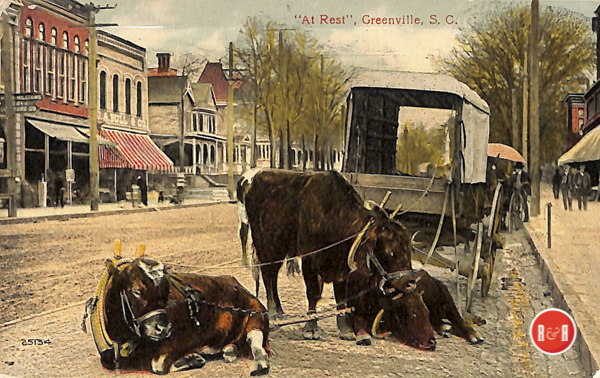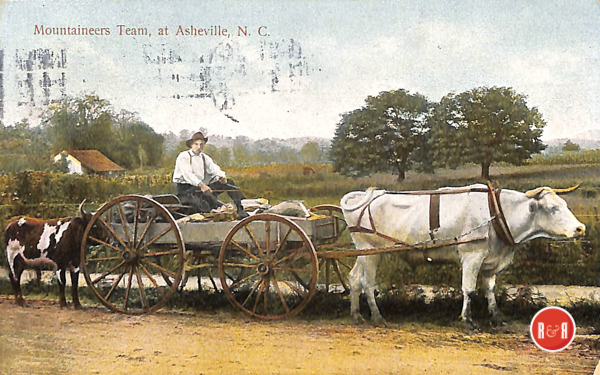“Cattle on the savannahs was a common antebellum sight…..”
City Directories and History: See PDF this page on the early history of Turkey Hill Plantation….
“In 1939 Jeremiah Milbank of New York purchased 19,045 acres in Jasper County. The land included three old plantations: Cypress Woods, Turkey Hill and Ocean. Ocean Plantation, now called “Log Hall,” had been owned by Colonel William Ferguson Colcock at the outbreak of the Civil War. The only buildings on the property were an old barn and a log cabin. The log cabin was built ca. 1900 as an office for the Savannah River Lumber Company. It was during this period that the tract became known as “Log Hall.” The one-story cabin has a gable roof, a shake shingle roof and exterior end chimneys.
The main house at Turkey Hill Plantation was built in 1940. Mrs. Milbank worked with Willis Irvin, architect of several Lowcountry plantation houses, in designing the French-influenced house. The brick house has a three-bay-wide central block with wings or hyphens extending off the east and west sides. Windows are six over six (6/6) lights (the shutters have been removed) and there are four interior end chimneys.
Turkey Hill Plantation is a part of the 24,000-acre Cypress Wood Corporation. Many contributions have been made to the agricultural development of Jasper County by the Milbanks and Cypress Woods.” Information from: Historic Resources of the Lowcountry, The Lowcountry Council of Government, Cynthia C. Jenkins, Preservation Planner – Published, 1979
Jeremiah Milbank of New York bought 19,000 acres of sand hills, swamps, and pine flatwoods from the Savannah River Lumber Company in 1939 and named it Turkey Hill Plantation. His plan then was to acquire a timber investment and a good hunting preserve. However, he also planned to consider the agricultural possibilities of his holdings and soon the plantation developed into a turkey processing plant. Later the property was expanded and became a beef cattle ranch, one of the largest in the southeast, containing about 23,000 acres of timber and 27,000 in pasture land for the 5,00 head of cattle.
“The first cattle ranches were most likely temporary drovers’ camps, but by 1715 these camps had developed into settlements and then into permanent plantations. The Cowpens were well fertilized and became desirable farm land, so that the frontier industry really was a precursor of staple crop agriculture. Cattlemen and Indian traders planted provisions within the fenced Cowpens and eventually moved their families and a few slaves to the settlement. These cattlemen joined the Indian traders as the first settlers on the southern frontier.” Also – “Cattle ranching was a perfect frontier enterprise, but its success depended upon access to open-range land. Increased settlement reduced the amount of land available and led to disputes among the new land owners. Bitter though they might have been, such disputes were insignificant when compared to the impact cattle ranching had upon the Yemassees. Free-ranging cattle destroyed Yemassee crops and reduced the deer population. Surveyors’ stakes and black lines on maps and plats imposed a new and exclusive kind of possession upon the lands, necks, and savannahs of the Lowcountry. After 1707, the commissioners of the Indian trade were occupied arbitrating between cattlemen and Yemassees over mutual destruction of property. Burnaby Bull and John Palmer regularly drove their cattle southward across the Combahee River in search of grazing lands.”(Information from: A History of Beaufort County, Vol. I, Rowland, Moore and G.C. Rogers, Jr. – Un. of S.C. Press, 1996)
The plantation house at Turkey Hill is of the Old-World architecture, and the inside is of a French Country style, with its long, winding staircase and two huge fireplaces at the end of the living room. The walls of the dining room are covered with an unusual woven fabric from Indo-China. In the house are many paintings by well- known artists such as Victor Joseph Gatto. White brick cottages have been built about the area for the manager and other heads of the farm departments.
(Information from: Names in South Carolina by C.H. Neuffer, Published by the S.C. Dept. of English, USC)
Stay Connected
Explore history, houses, and stories across S.C. Your membership provides you with updates on regional topics, information on historic research, preservation, and monthly feature articles. But remember R&R wants to hear from you and assist in preserving your own family genealogy and memorabilia.
Visit the Southern Queries – Forum to receive assistance in answering questions, discuss genealogy, and enjoy exploring preservation topics with other members. Also listed are several history and genealogical researchers for hire.
User comments welcome — post at the bottom of this page.
Please enjoy this structure and all those listed in Roots and Recall. But remember each is private property. So view them from a distance or from a public area such as the sidewalk or public road.
Do you have information to share and preserve? Family, school, church, or other older photos and stories are welcome. Send them digitally through the “Share Your Story” link, so they too might be posted on Roots and Recall.
Thanks!
User comments always welcome - please post at the bottom of this page.





Share Your Comments & Feedback: